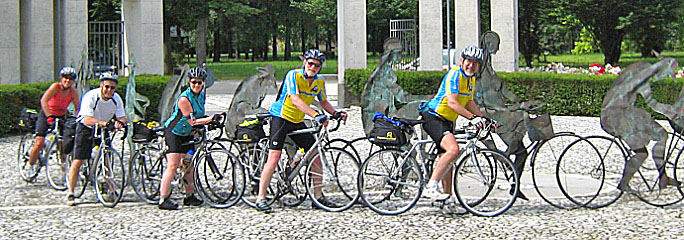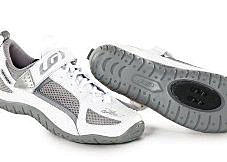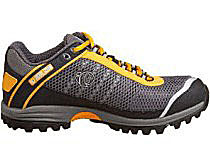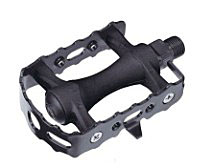In selecting shoes for use as you pedal on your ExperiencePlus! bicycling vacation remember the basics—comfort, safety, and function both on and off the bike. To help with your decision consider your cycling agenda: A typical day on an ExperiencePlus! bicycle tour consists of stops for photography, stops at cafés or markets and sightseeing, and may cover cycling terrain comprised of both flats and hills (gentle rollers to mountains check your itnerary’s daily levels). While one person’s focus for footwear may be on efficient energy transfer to the pedals, another person may find that cycling-specific footwear is not necessary.
Generally speaking cycling-specific footwear can be grouped as follows:
- Casual / touring shoes – have a sole study enough for cycling and yet flexible and comfortable enough for walking. Many have optional cleats for use in a clipless pedal system. They often resemble an athletic shoe, or an urban style walking shoe, and even sandals—some are quite fashionable.
- Road cycling shoes – have a rigid sole, little cushioning, and are light in weight with an emphasis on energy transfer to the pedals. They are meant to be used in a clipless pedal system and have a cleat that protrudes from the sole making it difficult to walk in.
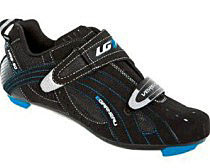
- Off road/mountain biking shoes – have a sole less rigid than a road shoe yet more rigid than an athletic shoe and have a durable toe box to provide protection. The cleat is recessed into the shoe making it conducive to walking and scrambling up trails.
What’s the buzz about energy transfer?
Certain types of footwear and pedals allow for increased efficiency in pedaling by transferring your power to the bike pedal during the full revolution and not just on the downstroke. But, as the saying goes “different strokes for different folks”, so read on to decide the best choice in footwear and pedals for you.
A pre-requisite to choosing your cycling footwear is identifying your preference in bike pedal type.Flat Pedals (available on ExperiencePlus! tours):
These pedals are shaped as a flat platform. No straps or cages are attached, but the pedal will likely have small stud-like protrusions to provide traction with the shoe to help keep the foot stable against the pedal. The bike you learned to ride on very likely came with flat pedals, as do most cruiser and casual commuter bicycles.
- Flat Pedal Advantages – they don’t require cycling-specific footwear and everyone knows how to use them.
- Flat Pedal Disadvantages – they offer the least efficient transfer of your energy to the pedal during your pedal stroke (only on the downstroke), and provide little stability between your shoe and the pedal.
Flat pedals are available on ExperiencePlus! bicycle tours and are a good choice if you are most comfortable riding with your foot not being constrained in any way. When stopping on the bike no special movement of the foot is required to get off the pedal. We recommend wearing an athletic type shoe with a sturdy sole or a casual cycling shoe with a stiff sole. Flip flops or open-toed sandals are discouraged for safety reasons and a thin soled shoe will not be comfortable against the pedal.Pedals with Half Cages (available on ExperiencePlus! tours):
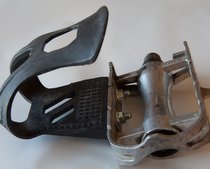
Pedals with Half Cages are flat pedals with a half cage attached to the front of the pedal. Half Cage pedals allow for an easy slipping of the foot backwards out of the cage and off the pedal. Often the cage is referred to as a clip, but this does not mean your shoe is clipped to the pedal.
- Advantages of cage pedals – they require no cycling-specific footwear, they offer improved power transfer to the pedal over a platform pedal, and a decrease in the chance of your foot slipping off the pedal.
- Disadvantages of cage pedals – though not really a disadvantage there is a small learning curve to remove your foot from the pedal by sliding your foot backwards then off the pedal.
Pedals with half cages are available on ExperiencePlus! bicycle tours and are a popular choice. Some folks who regularly cycle using a clipless pedal system but wish to travel light will leave their pedals and extra pair of cycling shoes at home and use cage pedals. For those new to a cage pedal it is advised to practice riding with the system before your tour. We recommend wearing an athletic type shoe with a sturdy sole or a casual cycling shoe.Clipless Pedals:
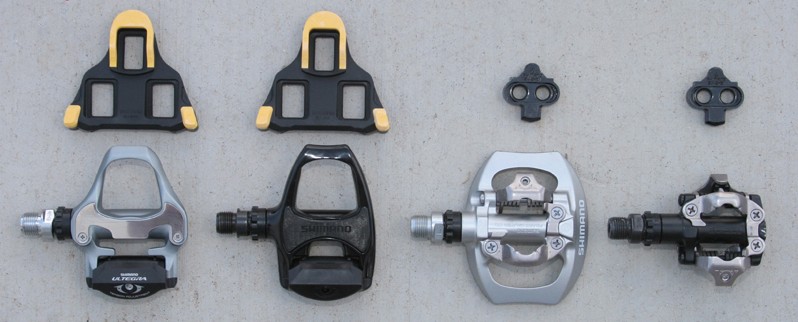
A clipless pedal has no cage or clip attached to it. Instead there is a mechanism requiring a cycling-specific shoe with a cleat on the bottom that “clips in” and attaches the shoe to the pedal. A clipless pedal is generally flat but smaller in size than a platform pedal. The shape of the pedal and the locking mechanism varies by manufacturer. The cycling shoe cleat and the pedal mechanism need to be compatible and are referred to as the clipless system (SPD, Look, Time, and Crank Brothers are common systems).
- Advantages of clipless pedals – they are lightweight and provide the most efficient transfer of power to the pedal. The shoe is clipped to the pedal allowing the power to be maintained during the upward stroke of the pedal, making it possible for you to pull up on the upward stroke. The stability offered with clipping-in also prevents the shoe from slipping off the pedal.
- Disadvantages of clipless pedals – you have to remove them from your bike at home and pack them for your travels. The shoes with cleats that allow you to use the system are generally heavier and may not be as comfortable as your casual shoes. There is also a learning curve in becoming comfortable with the system.
Clipless pedals are also popular on ExperiencePlus! bicycle tours.If you ride clipless then bring both your shoes and your pedals (tour leaders will install and remove them) on tour with you. The majority of folks prefer either the casual style or mountain bike style cycling shoe as they allow for comfortable walking. If you do ride with a road type shoe consider bringing a pair of sandals or other light shoe and carry them in the rear rack pack we provide for use when exploring during the day on foot. (Do not wear a shoe that does not clip in with a clipless pedal; the pedal size is too small and your foot can slip). Be sure you are familiar with the clipless pedal system, never attempt to learn the technique on tour. Read about ExperiencePlus’s Jessie’s experiences about learning to pedal clipless.Making that final decision:
As you think about stepping into your footwear for your cycling vacation, choose what works for your travels and cycling itinerary. If riding in anything other than clipless pedals feels awkward or inefficient then you have your answer. You may wish to consider the numerous styles of casual/touring cycling shoes that are available with optional cleats; they offer both efficient cycling and ease of walking. If you are new to cycling, there is no need to purchase a cycling-specific shoe or learn to clip-in; an athletic or fitness shoe can be worn.
While there is often a progression from platform to cage to clipless type pedals as one spends more time in the saddle, the style of shoe and pedal that makes cycling enjoyable for you is the correct choice.


